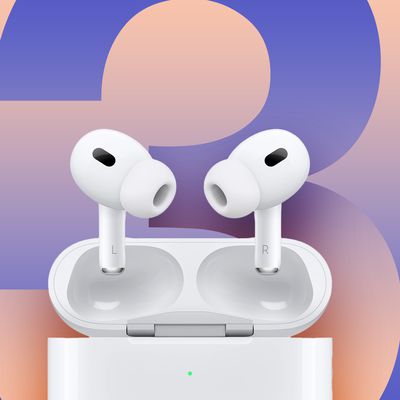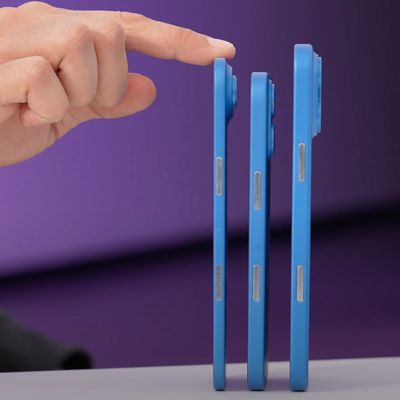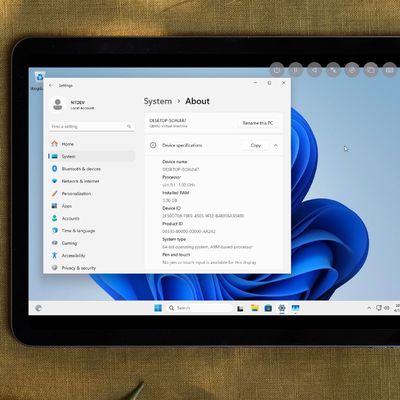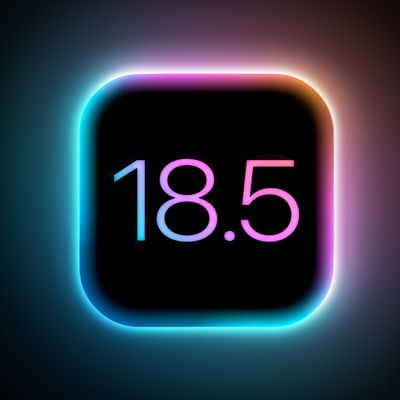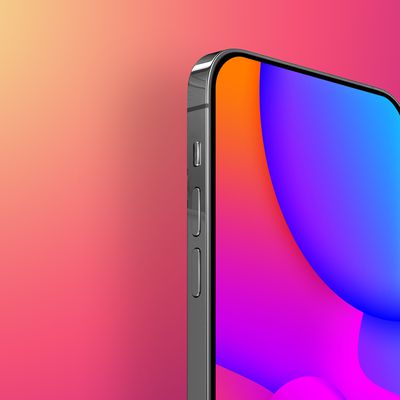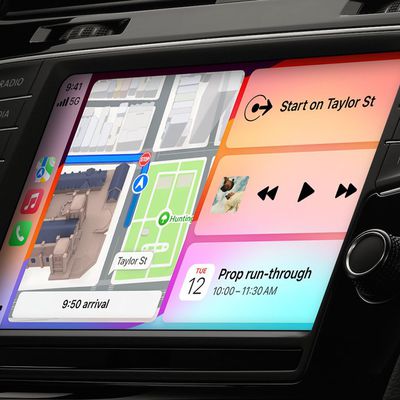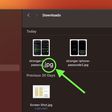After hanging on to my iPhone 14 Pro for a few years, I will likely upgrade to an iPhone 17 model this year. Typically, I only consider the Pro models, but the rumored iPhone 17 Air sounds intriguing. After reflecting on rumors, I have realized that upgrading to this device might not have as many compromises as I first thought.

Of course, the iPhone 17 Air is not yet official. Apple should announce the device in September, and rumors could change between now and then. Below, I have compared the iPhone 14 Pro and iPhone 17 Air as things currently stand.
Display
The iPhone 17 Air is rumored to have a 6.6-inch OLED display, which would be considerably larger than the iPhone 14 Pro's 6.1-inch OLED display.
ProMotion, the feature that enables a variable refresh rate up to 120Hz for smoother video and scrolling, has been limited to the Pro models since it debuted on the iPhone 13 Pro models. However, the iPhone 17 Air is also rumored to support ProMotion, so going down to a non-Pro model would no longer require giving up 120Hz.
Like the iPhone 14 Pro, the iPhone 17 Air is expected to have Face ID and a Dynamic Island, so you would not have to settle for a notch again.
A bonus with the iPhone 17 Air: It should have significantly thinner bezels around the screen.
Thickness and Weight
The main selling point of the iPhone 17 Air should be its ultra-thin, aluminum design. According to Apple analyst Ming-Chi Kuo, the device will measure just 5.5mm at its thinnest point, which would make it the thinnest iPhone ever.
iPhone 14 Pro models are among Apple's heaviest iPhones, having not yet benefited from the newer titanium design with tapered edges introduced on the iPhone 15 Pro models. Users upgrading from an iPhone 14 Pro to an iPhone 17 Air should notice a remarkable improvement in thinness, lightness, and pocketability.
Battery Life
Okay, but that ultra-thin design means that battery life will take a considerable hit, right?
Not necessarily.
While exact battery life specs remain to be seen, remember that the iPhone 17 Air is rumored to be equipped with a 6.6-inch display, which would make the device physically larger than the iPhone 14 Pro. That means more internal space for a larger battery, so the iPhone 17 Air's battery life might not be as bad as one might think.
Also keep in mind that the iPhone 14 Pro is a few years old now. Not only did Apple make power efficiency improvements on the iPhone 15 and iPhone 16 models, but even further advancements are likely with the iPhone 17 models.
Cameras
If photography is important to you, the iPhone 17 Air's rear camera system will likely be one of its biggest downsides. The device is rumored to be equipped with only a single 48-megapixel rear camera, with no dedicated Telephoto or Ultra Wide cameras.
That said, upgrading from an iPhone 14 Pro to an iPhone 17 Air might not be all that bad in this department. While it may lack a Telephoto camera, it will likely have Apple's so-called "Fusion" camera, which enables a 2x "optical-quality" Telephoto option. "Optical-quality" is not true optical zoom, but it is meaningfully better than blurry digital zoom.
There will undoubtedly still be a lot of advanced camera features that remain limited to the Pro models, but the iPhone 17 Air will likely be a perfectly fine choice for casual users who mostly take point-and-shoot photos.
One plus is that the iPhone 17 Air is rumored to have a 24-megapixel front camera, whereas the iPhone 14 Pro has a 12-megapixel front camera.
Apple Intelligence
Whether you think Apple Intelligence is useful or overhyped, the iPhone 17 Air is expected to support it, whereas the iPhone 14 Pro does not.
That means you will have access to tools that can help you to write, summarize your notifications, create custom emoji, automatically remove objects from the backgrounds of photos, and more. A variety of Siri enhancements are also coming in iOS 18.4, including on-screen awareness, understanding of personal context, and deeper per-app controls.
Other Specs
Beyond having a larger display and a thinner design, the iPhone 17 Air is rumored to have many other upgraded specs compared to the iPhone 14 Pro:
- A19 chip (vs. A16 Bionic chip)
- USB-C port (vs. Lightning port)
- 8GB of RAM (vs. 6GB)
- Wi-Fi 6E or Wi-Fi 7 (vs. Wi-Fi 6)
On the other hand, the iPhone 17 Air's single speaker would be a downgrade.
While this has yet to be rumored, the iPhone 17 Air is also likely to have an Action button, in place of the iPhone 14 Pro's Ring/Silent switch. It is less clear if the iPhone 17 Air will have a Camera Control button, but given that the feature is available on all four iPhone 16 models, it seems like there is a decent chance that it will.
One more thing to keep in mind is that the iPhone 17 Air is rumored to be eSIM-only, with no physical SIM card slot. If you purchased your iPhone 14 Pro in the U.S., this won't matter, as that model is already eSIM-only there. In other countries, it is a change to take into consideration, but note that the entire iPhone 17 lineup might be eSIM-only in more countries regardless. It is a change that you will have to face eventually.


